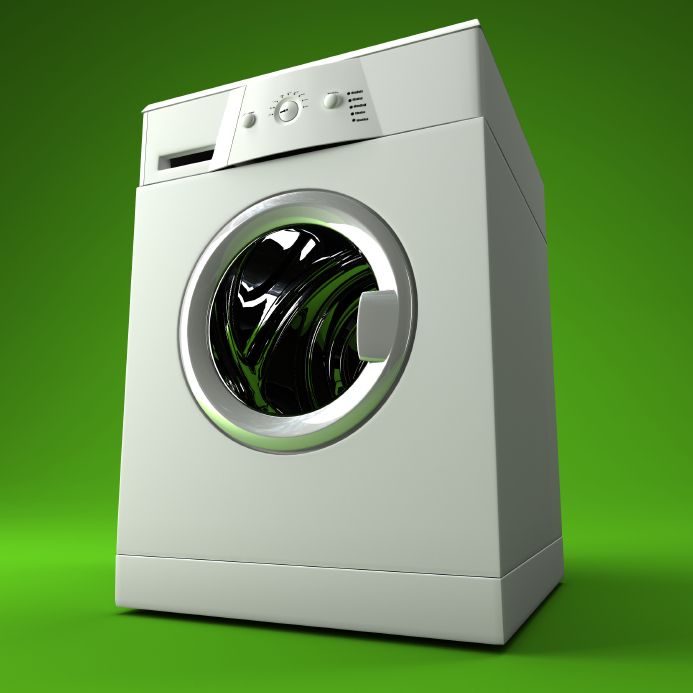 Sure, it’s smart, but is it a good conversationalist?So the oven says to the refrigerator, “Don’t be so cold.”
Sure, it’s smart, but is it a good conversationalist?So the oven says to the refrigerator, “Don’t be so cold.”
That line will soon be more than a bad joke. The Jetsons are coming to life as dishwashers, washing machines, and other home appliances begin to talk to each other and to the electricity grid in an effort to manage and reduce energy use.
Last week, for instance, General Electric and Boulder, Colo.-based smart-grid startup Tendril unveiled a deal to collaborate on software to connect the industrial giant’s “smart appliances” to the grid. Pilot projects with utilities are expected to begin by year’s end.
Given that about half of a typical home’s electricity consumption goes to power appliances, lighting, and water heating, so-called demand-response dishwashers and dryers could not only shrink your personal carbon footprint but allow utilities to avoid building new power plants to meet peak demand or firing up dirty ones to avoid brownouts.
“We’re looking at targeting a 30 to 50 percent reduction in energy usage per appliance,” says Tendril CEO Adrian Tuck. Tendril makes software that downloads data from smart meters to let people track their electricity usage in real time.
For most utilities, electricity demand peaks between 3 p.m. and 8 p.m., when people come home from work, cook dinner, wash clothes, run the dishwasher, charge up their mobile phones, and flick on their big-screen televisions.
During the summer they crank up their air conditioners, which is why utilities like California’s PG&E have spent billions of dollars building natural gas “peaker” power plants that sit idle most of the time except when a heat wave hits. (Or in the case of the Los Angeles Department of Water and Power, dirty coal-burning power plants in Arizona and Utah provide peak power.)
Of course, you, dear consumer, could care less because you pay the same flat electricity rate regardless of what it costs the utility to meet peak demand. But not for too much longer. Smart electricity meters and the interactive power grid will allow utilities to impose variable or time-of-day pricing, which means it’s going to get pricey to run the washing machine at 5 p.m. when you realize you have no clean clothes for work tomorrow.
Hence the Roombaization of the dumb dishwasher. If you turn on your oven to cook a meal when electricity rates are high, your stove will literally tell your refrigerator to delay defrosting or adjust its temperature until dinner is served. Likewise, the washing machine will send a signal wirelessly or through the home’s power lines to the dishwasher to switch on after the clothes are cleaned.
“When consumers buy a new fridge they’ll make a phone call or go online and register their new appliance with the grid,” says Tendril’s Tuck. “If they do that, the appliance will start to receive pricing information and download algorithms to modify its behavior.”
If you sign up for your utility’s demand-response program, the utility’s computers will adjust the energy consumption of your appliances and those in thousands of other homes — without affecting your lifestyle, Tendril and GE take pains to stress — to ensure peak demand is met.
Or you can set up your own rules for your machines — like specifying a monthly electricity budget and instructing your appliances not to break the bank. (Tendril is developing an app that lets customers control household appliances from their iPhone.)
Kevin Nolan, vice president of technology for GE’s consumer and industrial group, notes that homes must get smart to meet climate-change goals and manage an increasingly complex electricity system — one that will only get more complicated with solar panels on the roof and an electric car in the garage.
“When you think about having photovoltaics and plug-in cars, you really want to have an energy system in the home,” says Nolan. “One appliance will need to know what the others are doing.”
Smart appliances will come with higher price tags, given the added electronics. But Nolan thinks inevitable higher electricity rates will prompt people to replace their old machines when they realize the potential for savings and return on investment.
“In California, which looks like it’s going to have high peak rates, the savings could be substantial,” he notes.
The big question remains how much of an impact smart appliances will have on electricity consumption and greenhouse-gas emissions. While Americans may buy a new car every few years — at least they did pre-recession — they tend to hang on to their Kenmores for a decade and typically replace the range only when the kitchen is remodeled.
Noland and Tuck, however, think electricity prices, rebates, and pressure on utilities to meet renewable-energy goals will spur sales.
 GE hybrid electric water heaterTuck met with PG&E execs two weeks ago to demo GE’s smart refrigerator. Houston-based utility Reliant Energy may also conduct trials of the smart appliances; it has been deploying Tendril’s in-home energy monitoring and forecasting system to its customers.
GE hybrid electric water heaterTuck met with PG&E execs two weeks ago to demo GE’s smart refrigerator. Houston-based utility Reliant Energy may also conduct trials of the smart appliances; it has been deploying Tendril’s in-home energy monitoring and forecasting system to its customers.
But don’t expect to impress the neighbors with your high-tech intelligent washing machine. GE’s smart appliances look pretty much like their dumb cousins.
Unless, that is, you buy the company’s new smart hybrid hot-water heater that uses a heat pump to cut energy use by 80 percent during peak demand. It looks rather like a Dalek from Doctor Who.
Watch a GE video explaining how “energy demand management” works.
Read past Green State columns by Todd Woody.



